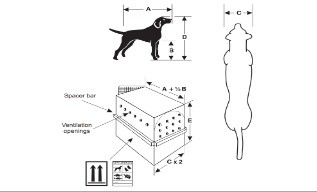The Breed Report: Flying with a Long Body Dog
A great example of a dog with a long body is the Basset Hound and as you can imagine, you have to pay attention to make sure you have the correct size crate for them. Basset Hounds are NOT on the list of restricted breeds (i.e., brachycephalic breeds) for transport via cargo and are not listed by DOT as being prone to death during transport via cargo. Unlike brachycephalic breeds, Basset Hounds have long heads/snouts (dolichocephalic), which allows them to breath and dissipate heat via panting-normally. This feature also makes them to have great senses of smell. They are second to Bloodhounds as being great scent hounds.
Basset Hounds also have a long body, short stocky bowlegs, wrinkly skin, and droopy ears and eyes. According to AKC breed standards, they stand up to 15 inches from their shoulders and weigh between 40-65 lbs. However, some can get up to 70 lbs. or more. Due to their stature, obesity, and back problems (intervertebral disc disease) are some of their health concerns.
When traveling with your Basset Hound, you must ensure that their pet travel crate has adequate space and ventilation to prevent them from overheating. They should never be in a crate that does not allow them to stand, sit-upright, and turn around.
To measure your Basset Hound, refer to the measurement guide for container requirement #1 of the current version of the International Air Transport Association Live Animal Regulations (IATA LAR). LAR-49-EN-Press (iata.org)Animal measurements:
A = length of animal from tip of nose to base/root of tail.
B = height from ground to elbow joint.
C = width across shoulders or widest point (whichever is the greater).
D = height of animal in natural standing position from top of the head or the ear tip to the floor (whichever is higher)
If you have questions or need tips to prepare your pet for air travel, please contact Dr. Nelva Bryant of When Pets Fly @
Sign up for travel news, updated regulations and advice to followers in our next Newsletter



